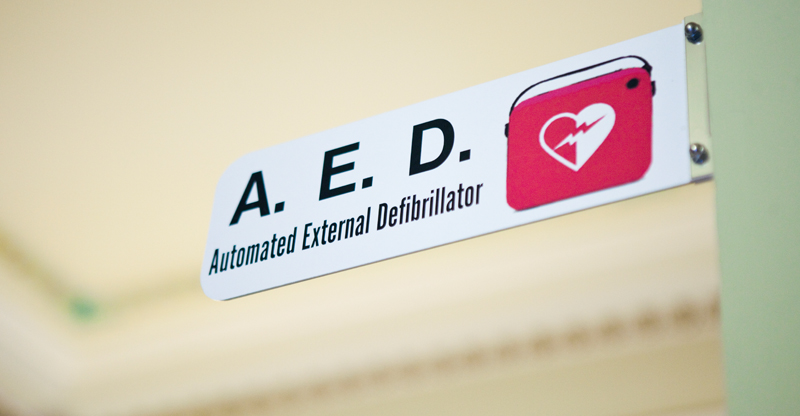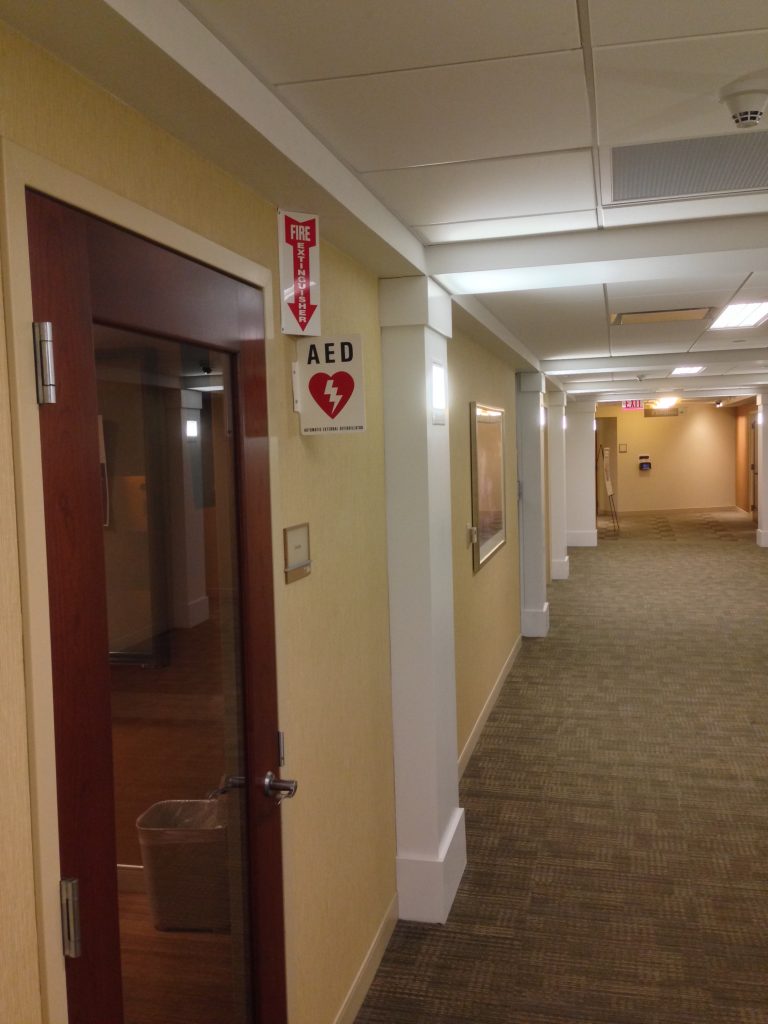14 questions about how to use an AED

Getting trained to use an automated external defibrillator (AED) in an emergency is easy, and the training (along with CPR) takes only a few hours. If you can read this article, you can almost certainly operate an AED. Here are some frequent questions about how to use an AED:
1. What is an AED?
It’s a portable life-saving device designed to be user-friendly enough for a layperson to operate in an emergency. It’s automated because the user does not have to manually program it. It’s external because it is not implanted into the body of the person the way a pacemaker is. It’s a defibrillator because a common cause of cardiac arrest is atrial defibrillation, or AFib. During AFib, the heart is no longer pumping blood, but instead is “quivering.” The heart must pump in a normal rhythm to keep you alive. The AED can help the heart get back to pumping in a normal rhythm by using electrical therapy. There are many makes and models of AEDs, but it’s similar steps to operate any of them.
2. How big is it?
An AED is usually smaller than a shoebox and weighs a couple of pounds. Almost anyone can handle one.
3. Where can I find one if I had to?
They are available in most places where the public gathers, such as concert halls, sports arenas, schools, airports, gyms, hotels, malls, hospitals, and public transportation centers. In some places, a 911 operator may be able to tell you where the nearest one is.
4. How do I locate it in particular in those places?
Often, the area with the AED will have a visible sign for it.
5. I found the AED. What is the first thing I should do? If you have never been trained to use an AED, look at question #13 right now.
If you have been trained, open the case and power it on. Find the power button and press it. Some AEDs may turn on as soon as you open them.
6. Is it hard to use?
Not at all. It is designed to talk you through all steps. Once you power it on, it will tell you what to do. A recorded voice will give you very clear instructions.
7. What will it tell me to do?
It will tell you to attach the pads to the victim’s bare chest. The pads will have pictures on them showing exactly how to place them. Place them in the same place and direction as the pictures show. If someone is performing CPR on the victim, work around them. When they are placed on the bare chest, it will power up and analyze the heart rhythm.
8. The AED is analyzing the rhythm. What should I do?
The AED will tell you that it is analyzing the rhythm and that nobody should touch the patient. Be assertive and in a loud voice, tell everyone to clear the patient. If anyone is performing CPR, they must stop. If the victim is on the ground or floor and people are kneeling around the person, their knees may be touching the victim. Tell them to back off a bit so they are not touching the victim. You do not want them to experience the electrical impulse the AED will give.
9. What complications may come up?
The pads have to be connected to the victim’s bare chest. You may have to rip open the victim’s shirt. If the victim is wet, you may have to quickly wipe off the chest. You can use your sleeve if a rag is not available in the AED. You don’t have to be perfect. Also, the victim may have chest hair that interferes with the pads. The AED may have a razor included for a quick shave of the necessary spots. If a razor is not available, you can rip the sticky pads off the spot where they get placed. The chest hair will come off with the pads. Check the AED for extra pads and use new pads.
10. The AED says to deliver a shock. What do I do?
You must assertively tell everyone to clear. It is critical that nobody is touching the patient. Check that others do not have their knees touching the patient. There will be a button to deliver a shock that may get the heart back to a normal pumping rhythm. It will usually have a lightning bolt symbol on it. When nobody is touching the victim, push that button.
11. What if it doesn’t work?
The AED will detect if the shock was successful, or if CPR should continue. The AED will analyze the heart rhythm every two minutes or so. It may advise another shock. This may happen for several cycles. Continue CPR between shock cycles.
12. That all sounds really easy. So I should use one if I witness an emergency? It is easy, but the AED should be handled by those with training.
Although the training and use of an AED are easy, there are some dangers, such as electric shock. Someone should still retrieve it, in case someone nearby has training.
13. Where can I learn to use an AED?
You do not need to have a medical background to operate an AED. You can use an AED trainer if you take a CPR class through the American Heart Association. Find a class here:
http://cpr.heart.org/AHAECC/CPRAndECC/UCM_473161_CPR-and-ECC.jsp
14. So if I learn to use an AED, I’ll learn CPR too?
In fact, many AEDs will have an information button that will walk you through how to perform CPR compressions, in case you are struggling to perform CPR in the stress of the moment.
If you would like to be prepared in this type of emergency, seek opportunities for AED training and CPR. If you are reading this right now, you have what it takes to learn how. You just may save a life!
Resources:
http://www.heart.org/idc/groups/heart-public/@wcm/@hcm/documents/downloadable/ucm_300340.pdf
http://www.redcross.org/take-a-class/aed/using-an-aed/aed-steps



